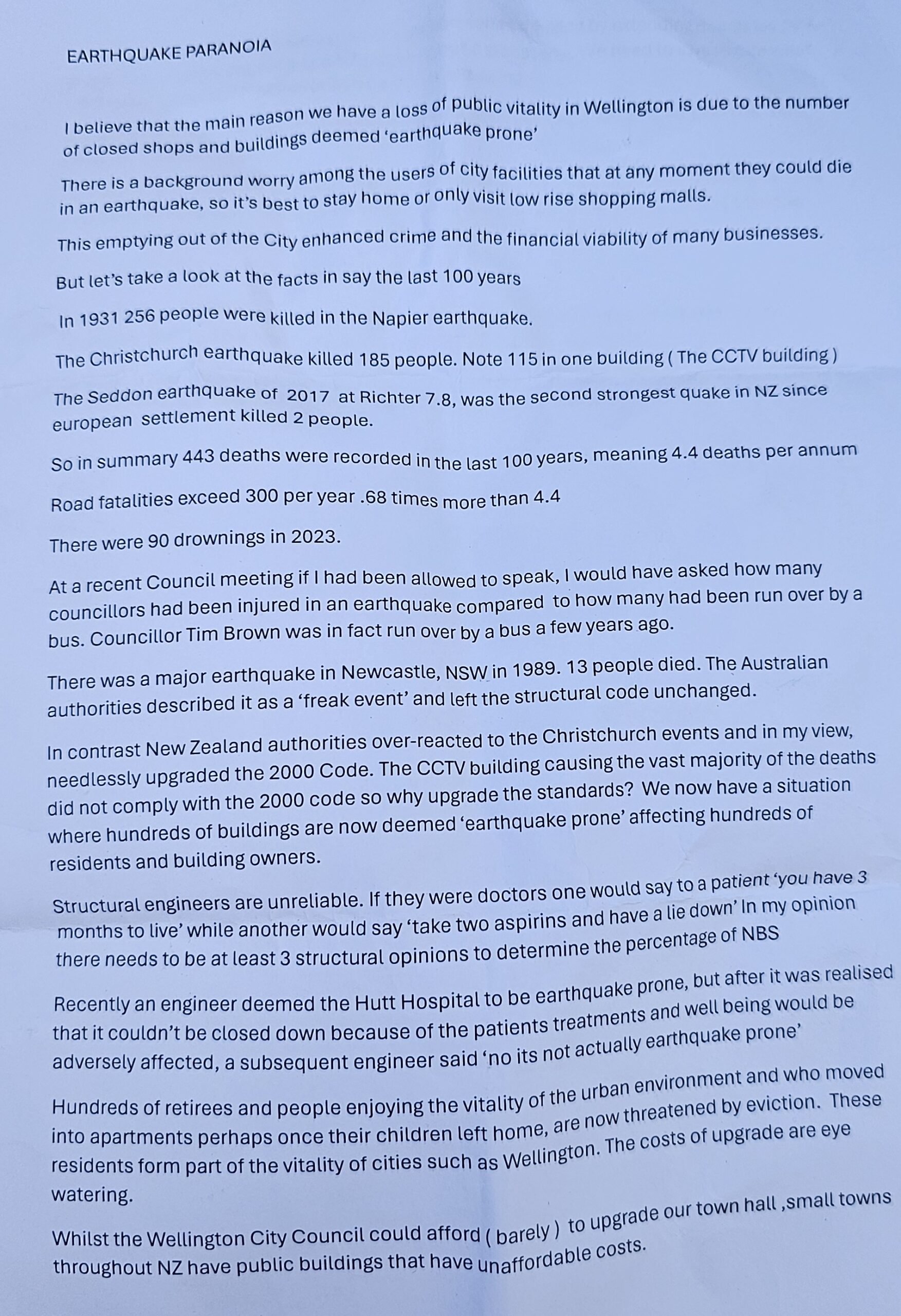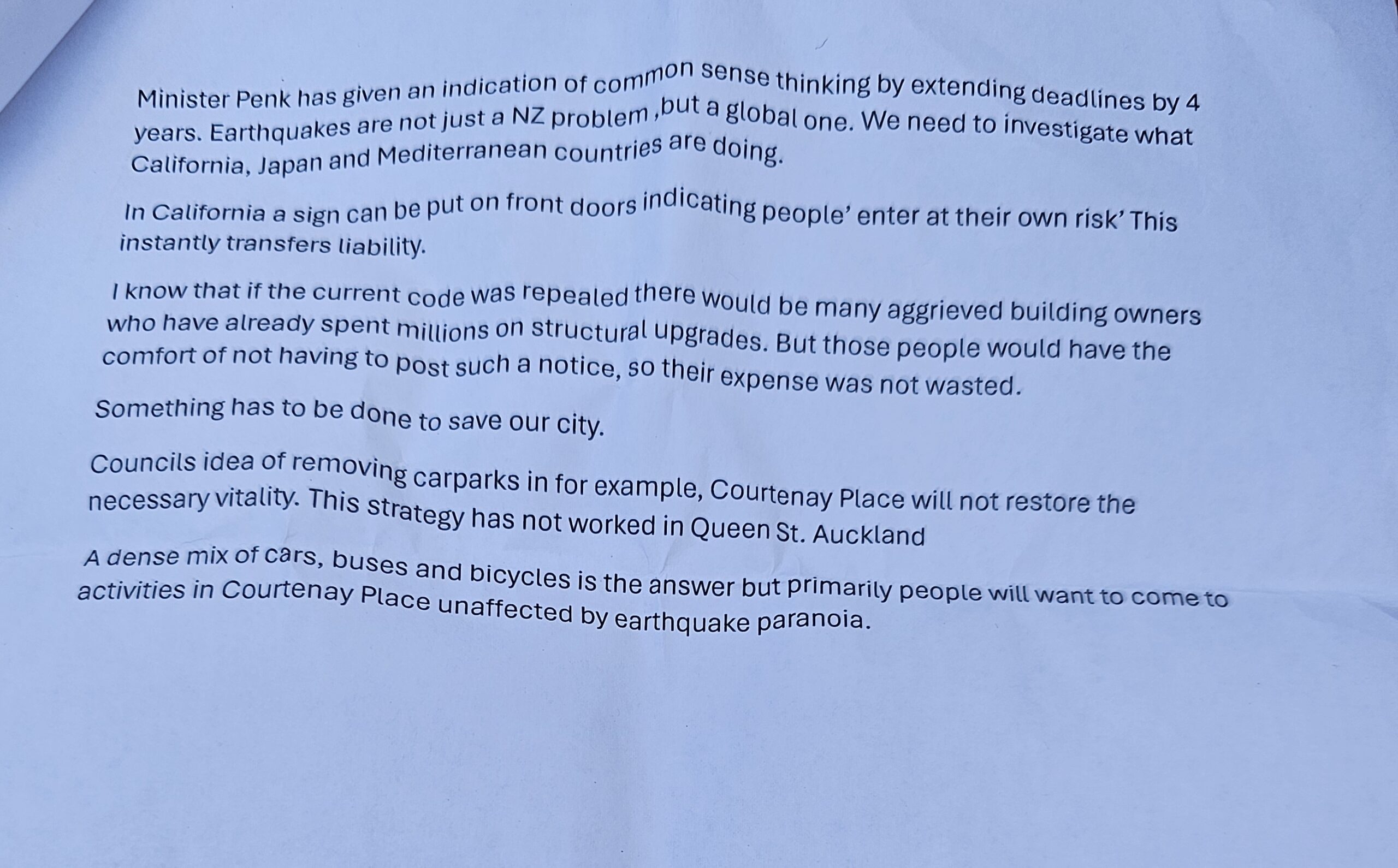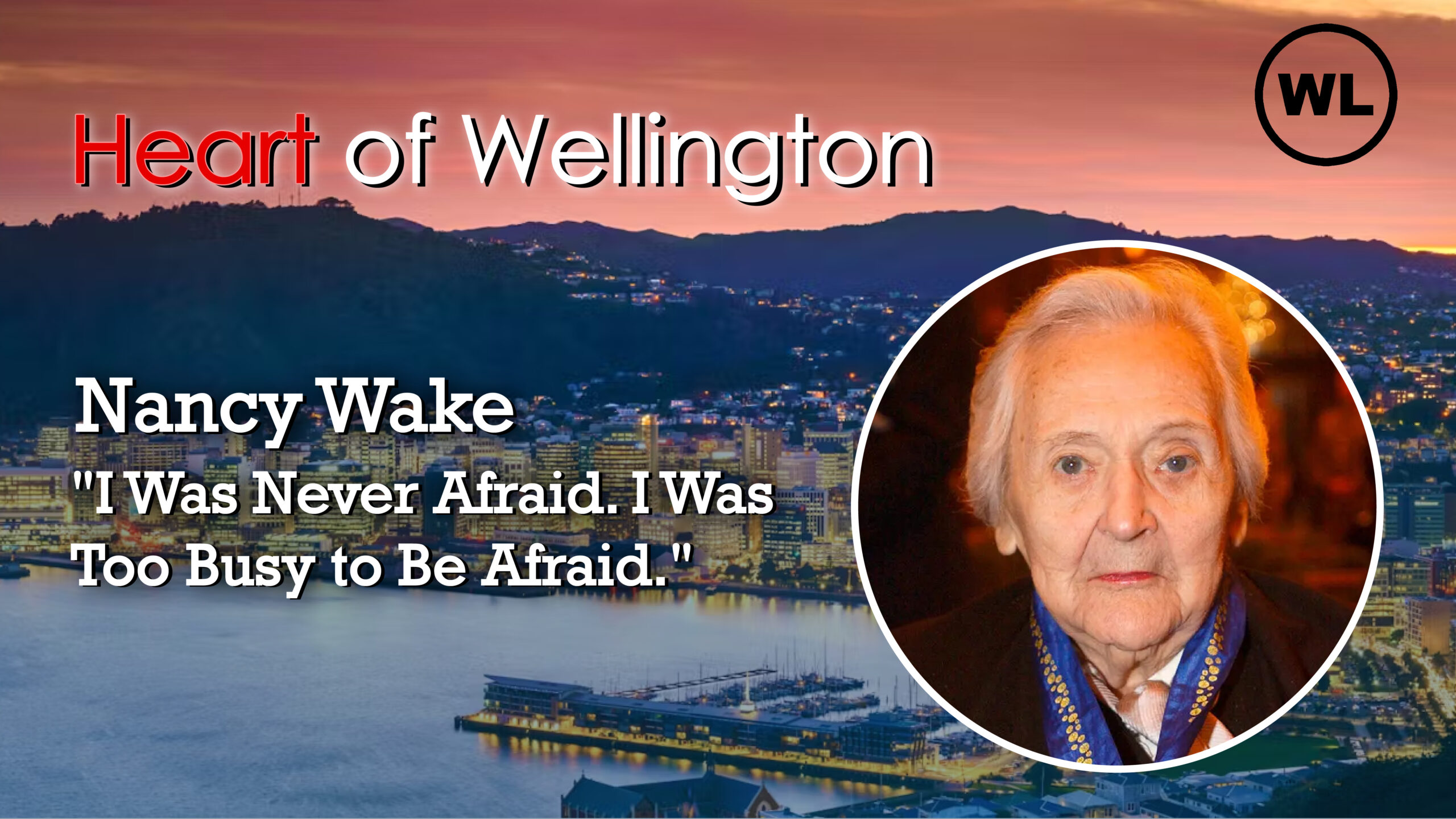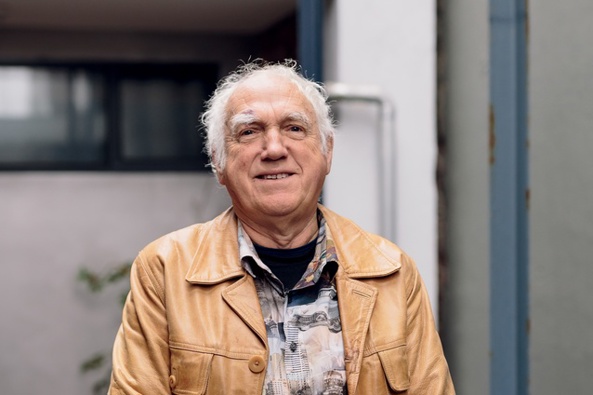

I believe that the main reason we have a loss of public vitality in Wellington is due to the numberof closed shops and buildings deemed ‘earthquake prone’There is a background worry among the users of city facilities that at any moment they could diein an earthquake, so it’s best to stay home or only visit low rise shopping malls.
This emptying out of the City enhanced crime and the financial viability of many businesses. But let’s take a look at the facts in say the last 100 years In 1931 256 people were killed in the Napier earthquake.
The Christchurch earthquake killed 185 people. Note 115 in one building (The CCTV building) The Seddon earthquake of 2017 at Richter 7.8, was the second strongest quake in NZ sínce european settlement killed 2 people.
So in summary 443 deaths were recorded in the last 100 years, meaning 4.4 deaths per annum Road fatalities exceed 300 per year .68 times more than 4.4 There were 90 drownings in 2023.
At a recent Council meeting if I had been allowed to speak, I would have asked how many councillors had been injured in an earthquake compared to how many had been run over by a bus. Councillor Tim Brown was in fact run over by a bus a few years ago.
There was a major earthquake in Newcastle, NSW in 1989. 13 people died. The Australian authorities described it as a ‘freak event’ and left the structural code unchanged.
In contrast New Zealand authorities over-reacted to the Christchurch events and in my view, needlessly upgraded the 2000 Code.
The CCTV building causing the vast majority of the deaths did not comply with the 2000 code so why upgrade the standards? We now have a situation where hundreds of buildings are now deemed ‘earthquake prone’ affecting hundreds of residents and building owners. Structural engineers are unreliable.
If they were doctors one would say to a patient ‘you have 3 months to live’ while another would say ‘take two aspirins and have a lie down’ In my opinion there needs to be at least 3 structural opinions to determine the percentage of NBS Recently an engineer deemed the Hutt Hospital to be earthquake prone, but after it was realised that it couldn’t be closed down because of the patients treatments and well being would be adversely affected, a subsequent engineer said ‘no its not actually earthquake prone’ Hundreds of retirees and people enjoying the vitality of the urban environment and who moved into apartments perhaps once their children left home, are now threatened by eviction. These residents form part of the vitality of cities such as Wellington. The costs of upgrade are eye Watering.
Whilst the Wellington City Council could afford (barely) to upgrade our town hall,small towns throughout NZ have public buildings that have unaffordable costs.
Minister Penk has given an indication of common sense thinking by extending deadlines by 4 years. Earthquakes are not just a NZ problem, but a global one. We need to investigate what California, Japan and Mediterranean countries are doing.
In California a sign can be put on front doors indicating people’ enter at their own risk’ This instantly transfers liability. I know that if the current code was repealed there would be many aggrieved building owners who have already spent millions on structural upgrades. But those people would have the comfort of not having to post such a notice, so their expense was not wasted. Something has to be done to save our city.
Council’s idea of removing carparks in for example, Courtenay Place will not restore the necessary vitality. This strategy has not worked in Queen St. Auckland A dense mix of cars, buses and bicycles is the answer but primarily people will want to come to activities in Courtenay Place unaffected by earthquake paranoia.
Summary :
The article argues that earthquake paranoia, amplified by the closure of many buildings deemed ‘earthquake prone,’ has caused a decline in Wellington’s vibrancy. The author challenges the perceived risk of earthquakes by comparing historical fatality data and questioning the need for strict building codes. They criticize the New Zealand authorities for overreacting to the Christchurch earthquake and suggest learning from other countries’ approaches to earthquake safety. The author proposes alternative solutions, including liability waivers and repealing the current code, to protect building owners and encourage the revitalization of the city center. They also emphasize the importance of a balanced transportation mix and addressing the root cause of the problem – the fear of earthquakes – to bring people back to the city.








